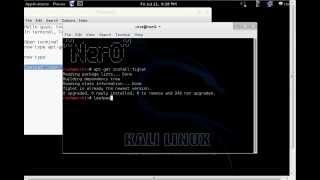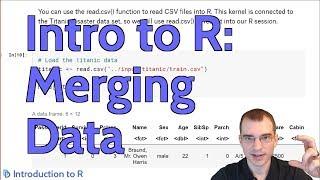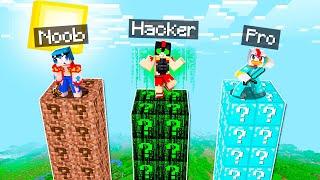
ADVANCED FIXTURING | Set Z Fixture Offsets to Numerous Heights… Set All Tools to Single Height
Комментарии:

Something for everyone! We have machinists of all levels following this channel so I figured I would do a quick teaching on setting multiple parts at the same time with a Haimer 3D Sensor. When repeating jobs, this ensures everything stays perfect every time. All tools are zeroed off the 1,2,3 block always.
80-90% of machines don’t actually have probes installed so this works nicely. Just another option.
I myself, always use probes but, used to do it this way.
Have a great day!
Titan

Only a sith deals in absolutes
Ответить
why do it so hard. you not need know what distance 123 block is from part lol. you only need know heimer tool lenght. measure part surface with g43 H(heimer tool number) zero your offset BOOM. why is so hard? lol.
you can take tool height from that 123 block completely fine if you measure everything same place allways, but if you put mind on it. you can figure what is max z travel. its not what specs say but close.
i made g command to measure tools from same place and it give correct height. same as peepol use tool height gauge. why need buy lol
we not have any heimers or any its paper or shim 0.01 and its allways that acurate. rest is how tool cut and change offsett lol. is not that hard

0.0001 inch = 0.00254 mm. you machine has 0.0000 every mm machine has 0.000. we can program 0.001mm its less than 0.0001inch. mm acurate.
ofc you can program inch using 0.00001 but your screen says 0.0000 LOL. why inch machines is so inacurate on screen. we do parts more tolerance than 0.0001 inch opsy

awesome Titan ,thanks again for sharing the knowledge defiantly essential things to know
Ответить
Thank you for your all videos... I watch your videos every day... I learn cnc machining from your videos
Ответить
I made foundry patterns for a few years, spinal implants for a few years, and plastic injection mold assemblies for a bit. Everyone does stuff different, I have learned so much. I took a break for 5 years and just got a position in a job shop. I’m nervous, but not too worried. Maybe a little surface rust but it comes right off
Ответить
Titan quick question, is there a way to do this so that your G54/G55 Z0 was at the top of workpiece instead of being a nonzero number?
Ответить
Great video Titan
Ответить
Anyone use the IHMI control to touch off Z offset. I’m trying to do it like I would on the classic screen where the tool sits right over a block and you hit z calculate and set that as my z offset. But the IHMI display does not give me that option. I know I can just type in my current z location but that’s not how I want to do it lol.
Ответить
Thanks
Ответить
Idk what was missed in the video but the comments are disappointing...
The whole point is to have a solid reference you can rely on and you can then adapt it into your program.
Whether you're replacing a broken tool or just adding a new one, you don't zero off of the rough barstock. The 123 is your zero.

what is the accuracy difference between using the 1-2-3 block and a z-setter with a dial or digital readout?
Ответить
Why not calculating from the highest part it would be much safer
Ответить
Dope
Ответить
Yeah, until you start working with machines that are actually accurate and repeatable; such as okuma’s. No more “homing your machine” every time you start it up or run a program. None of this chincy Haas or Doosan stuff 😅🤣
Ответить
I wish they would have shown your videos at the school I went to. Would’ve made a lot more sense
Ответить
Awesome setup video for Non probe machines. Most of us, Like Titan, were setting up CNC machines with edge finders and 1 2 3 Block for years. Just as accurate and I think just as fast. The Z axis WCS location and how you touch off tools can be done various methods. I always try to teach to learn different methods. Wherever you end up working , you can setup just like the rest of the shop - same method.
Ответить
You do a good job explaining, Titan. Thank you and have a happy new year!
Ответить
Great video. Great education. Thank you
Ответить
Boom
Ответить
Noticed you have switched a lot of tool holders back to set screw/Weldon shank holders. I understand their best feature isn’t good runout. Why did you switch?
Ответить
We have a vacuum table on which we work with thin (4-8 mm) sheets of aluminium. I’m pretty scared to work on it because some guys mill right into the table as tools usually work at a 0.2 mm from it.
I’m not sure if this is right and I can’t get a straightforward answer from my colleagues.
But since I have to make sure somehow that neither the roughing nor the finishing tool would reach the table, I feel I must test all these tools on the side of the table, outside the work area, by sending them to the lowest Z coordinate they will be sent to in the program. I have to find the lowest coordinate of Z in the program for this, but I also do this with the spindle not spinning. Which makes some of my colleagues twist their head, but with the tool not spinning, I can see much more clearly where it is because I can see the blade’s reflection on the table, though I don’t mind stopping and opening the door a lot to make sure, but I just want to make sure.
Because you can see when a tool goes closer than the intended approach distance, things like that, but you won’t see whether a tool is just 1mm too low than it should be. You’ll only hear that it’s milling the table.
Would anyone have an opinion on how bad practice this is or any alternatives? The table is also custom built aluminium alloy, so I figure even if I mess it up, the tool will just make a small impression on it outside the work area.

if you know your Hamner length mine is 186.347 just touch on your part hit Z measure type in the length of your hammer and done.
Ответить
After working on a 5 axis machine I started using a fixed xyz origin for all my programming, even on 3 axis. I use the machine zero for x and y and a 4in tool setter gauge off the top of a fixture plate. This is made easy using a fixture plate and tightly pinned vises and fixtures. If I'm working from stock I set up my job in the machine, then measure the location of the stock in z and x if its in the vise. with stock in the vise you can use a floating pin stop to set the side to side of the part. if its round stock in a collet chuck I measure x y and z using a dial indicator and a height gauge. I Then cad everything up, and its very easy. Often times ill 3d print a fixture that aligns to the fixture plate if I'm holding a part that needs to be modified, reworked or have a second op done. This method has many advantages. if I want to run a job again, I have a 3d model of the entire setup, and I don't have to re-establish my z height ever. since the origin doesn't change, Its less likely to crash. I can simulate the entire job and be confident that it wont crash as long as my tool stick-outs are correct in the cam software. The disadvantage is that if you are reworking a part you need to precisely measure the location of parts relative to the machine home, and its not ideal if you are running multiple parts and they shift from run to run. this could be avoided by running a probing cycle and using that to transform the program to the right xyz location.
Ответить
Seems a very complicated and errorprone way of doing this
Ответить
One of the shops that I program for does not have a probe and I have to do it this way. I much prefer a probe and a different work offset for each part, but you have to use what you have. Even my personal hobby shop Haas TM mill had a probe.
Ответить
This seems way complicated for no reason, machines 0 is normally work offset G52 or G53. I guess what your doing is setting everything without using a spindle probe, tool probe or tool measure. The way I've always done that was set my X and Y part 0 off the part, and my tool length off the top of the part. But thinking about what you said about tools breaking. I used a 123 block or 1 inch block to measure an already known tool from a set location machine 0 (table) took the difference between and added it to the new tool...example -16.75+5.6 so my new tool 11.15 were the previous tool may have been 10.
Ответить
We use a z setter based on a macro. Setter is a set value so on either or Okuma or Mori, Z Value measure, work height offset is done.
Tools, basically the same. We have a touch of block and macro based on a 3 inch gage block.

I dont know why anybody, especially someone with a Haimer, needs to make this so complicated. Hiamer becomes your master tool for Z 0.0 height, every tool is referenced as plus or minus to the Haimer. You can set tool heights on anything you want at any time as long as the Hiamer hasn't changed or broken a tip.
Ответить
I love machining! I run an Okuma and love that you never have to home it!
I have 20 part offsets and many times I can just turn it on, load up the stock press go and OP1 is done✔

I hope I'll never again have to deal with fanuc.
Ответить
I developed a macro to do all of this. All I have to do is load the tool # and diameter in my macro and then touch the tool off a fixed point on the table. It sets the length and diameter in the control then retracts. Works exactly like having an OTS on the table.
Ответить
Merry Christmas
Ответить
This is basically how I set Z offsets, but I use the edge technologies height setter, and i also set all my tool heights from the spindle nose. Like others here are saying you always end up with the true tool length and positive number, I only use 1-2-3 blocks if it’s more convenient. Love these videos it’s interesting to see other methods.
Ответить
So why would you introduce another variable to the equation by using a 1 2 3 block if the table is the reference surface? Why not zero your fancy 3D thing on the table and calculate the difference from there? A reference tool can solve many issues, all tools are set in reference to that tool, and that tool is used to set your WPC (work piece coordinates) . Nothing is then set from home, like what's going on here. Each shop has it's own standard practice so as a machinist each has to adapt. This is far from perfect as you state
Ответить
I’m little confused. What happened to 3 inch for the block. Why not take zero from table it self. I’m used to with negative z offsets and positive tool length.
Ответить
I olny have experience using a probe. This is awesome
Ответить
I would personally not teach people to use negative tool offsets but to be fair this does work.
Ответить
Titan if I was using a tool setter out side of machine as you guys have done in previous videos. What would be the best way to set different work shifts in Z?
Ответить
P.s.
I still touch off on a zig zag. Less risky in being off than the infinitely more complicated variables adding links to the mechanical metrology chain. And how clean was the table when you set the block down? 🚫 link, link, link... boom!

That 8 hundredths of a tenth in that one shot made my left eye twitch a bit...
Then the next shot with it z'd out on the dial with no clicky wheel clicky clicks made the twitch stop.

To that last point, also make sure if you are running a tool that might be shorter, you don't bring the spindle casting/cover/coolant system down on a tall part elsewhere in the machine. Just cuz the part you're on clears the tool and holder and spindle nose, something else on the table might not.
Ответить
I have a fast method because I was rushed to run 3 machines for $16/hr I use a magnetic tool setter and any tool endmill. Zero out my tool setter, set it, zero out my relative, go above the center of the part with the magnet tool setter, get the difference and put it in my offset. It's pretty good if you're in a time crunch.
Ответить
Titan I love you man, this one may be a hard one for some newbies in the trade to follow but I think I understand what you’re trying to explain here. When I started working for a company with no probing system I came up with a similar way of doing this but with an edge finder. I put an edge finder in pocket 20 or 25 and kept it there. I touch off a 1x2x3 block in my vice for Z then touch all my tools off the block too. Then I do some math and figure out all the differences in Z height from edge finder to the tool lengths (same thing the Reinishaw probe does basically) and now all those tools are gauged. Next job comes in I’m not touching off a common tool all over again I just touch off the raw stock with my edge finder and a shim and I’ve set Z. I think you’re trying to say something very similar, but even I was a little confused with the video.
Ответить
I have a $5000 CNC machine, I have no idea why I watch these videos LOL!
Ответить
We just use the Renishaw 3D Probe, but they're quite expensive... This is also a really good method to get your Z-Offset
Ответить
Меня так дед на заводе учил привязывать инструмент. Сейчас пользуюсь renishow и грусти не знаю)
Ответить
Love these short videos on the basics! This is how I do it on my older fanuc-controlled machine (haimer probe, tool setter gauge, probe the difference between tool height and work height). I also like to write down my offsets before putting them in the machine. It's an extra step, but sometimes it's good to get the numbers onto paper as a confirmation and error catcher.
Ответить
This video is the best argument for tool probes or presetters. Not that Titan is doing anything incorrectly, but this is such an error-prone method of setup. Every peeler I know has wrecked tools at some point doing this, plus it's very time consuming compared to presetters, which allow you to set tools while the machine works, and the numbers are the physical tool length rather than an arbitrary machine position.
Automated tool probes are even better, fast, measure wear, process safety. Unless you have very limited changeover, this is the worst method. (But I would strongly argue for a tool probe for high volume work)
























